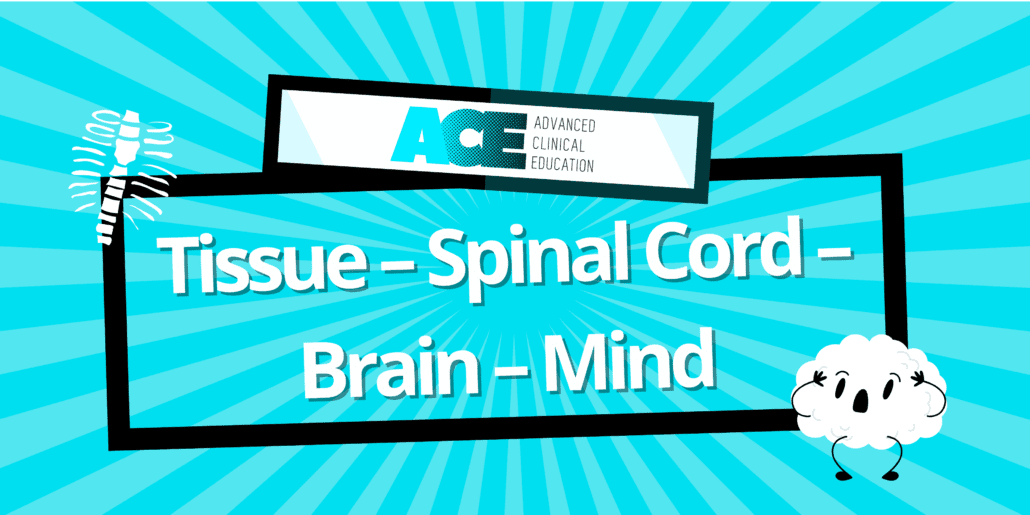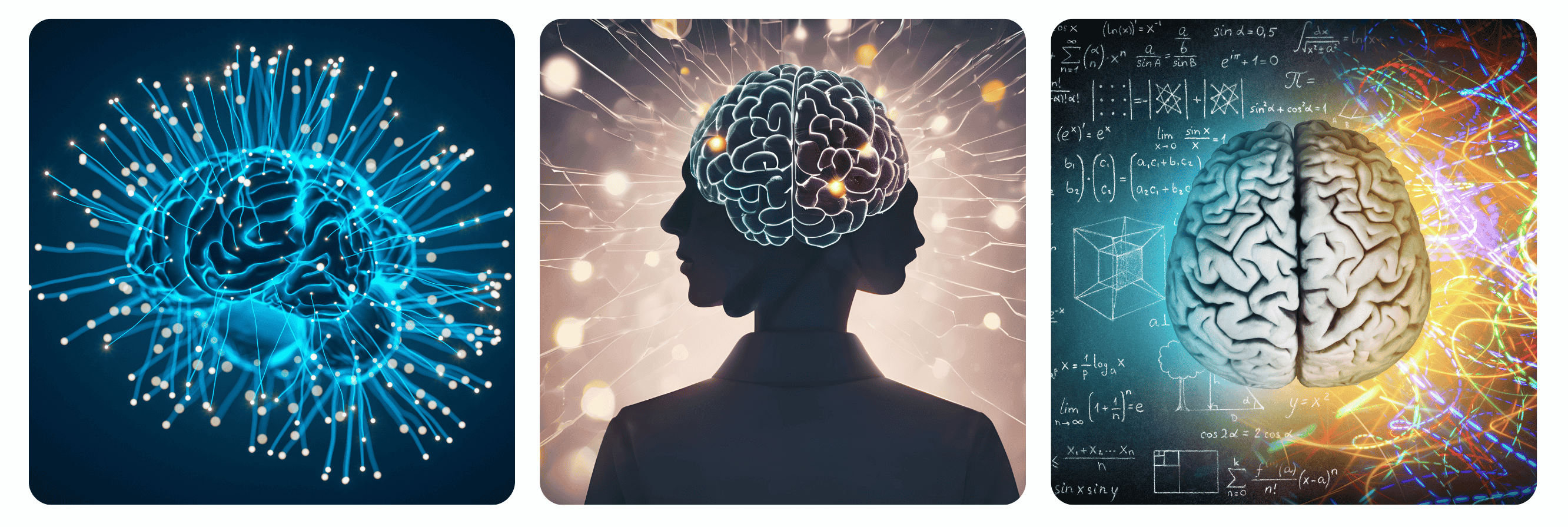Tissue – Spinal Cord – Brain – Mind


If you’ve sat in a class room with me, you’ve most likely heard me talk about four levels of effect when it comes to manual therapies.
I like to break it down this way, because it shows just how vast the mechanisms of effect that we are interacting with actually are.


Old school manual therapy education told us that we press into tissues and that causes mechanical changes in the properties of that tissue.
“Breaking up adhesions”, “lengthening fibres” — that sort of rubbish thing.

We’ve come a long way since those ideas were considered truth.
Now we have a much more realistic and evidence-informed understanding of what happens when we apply manual therapy for our patients.
Yes, there are changes that occur in the tissue, though we are not forcing structural change with our hands like we once thought.
It is far more a case of changes in the chemical environment due to alterations to blood vessel size, and also due to the wide range of sensory input we create with our touch.
Beyond the tissue, we also generate neurological input that drives to the spinal cord, which in turn will:
- alter sensation
- modulate pain
- change motor output
- and a range of other things

Beyond the spinal cord, we have supra-spinal effects in the brain that also drive change in our pain experience but also potentially alter:
- how we perceive threat
- how we regulate stress
- even the importance of the body part in question

It is very easy, though, to overlook the less tangible, but no less powerful impact that we have on the mind.
I’m not talking about the brain as a structure, but the conscious and subconscious interpretation of the patient’s experience with us (in their .
Their mind has an incredible ability to diminish or amplify what we do for them.
The mind will receive a sensory experience from us, which is made up of:
- what we do with our hands and tools
- the environment we create around us
- the language or words that we use
- the way we carry ourselves
- our body language
- the confidence and certainty with which we provide care
All of this paints a picture in the minds of our patient, a picture that has the power to dramatically impact the outcome of the consultation.


While it seems obvious to focus our efforts on developing a structured and science-based approach to treatment design and delivery (and we should!), it might also be suggested that being equally intentional with the way in which we relate and engage with our patient, is just as important.

- Is this something you practice or work on?
- Do you think about the way your hands might feel when you first place them on your patient?
- Do you think about the way your clinic environment might feel when they first walk in?
- Do you think about the tone you use, the words you choose, the body language you display?
- Do you think about the hope you instill in your patient?
- Do you think about the positive frame you provide when sharing information?
- Do you think about how you inspire trust in you as a health care provider?

All these factors will contribute to the mechanism of effect we might refer to as placebo.
Placebo seems like a dirty word in health care, but it is arguably a very real, and powerful mechanism in the services we provide.
The human mind will support movement and change in our physiology in the direction of things we feel are good for us.

Only if that is all we are relying on.
But — couple it with an evidence-informed and science-backed approach in your treatment plan…
…and your patient’s mind will work to maximise the effects you are aiming for.


